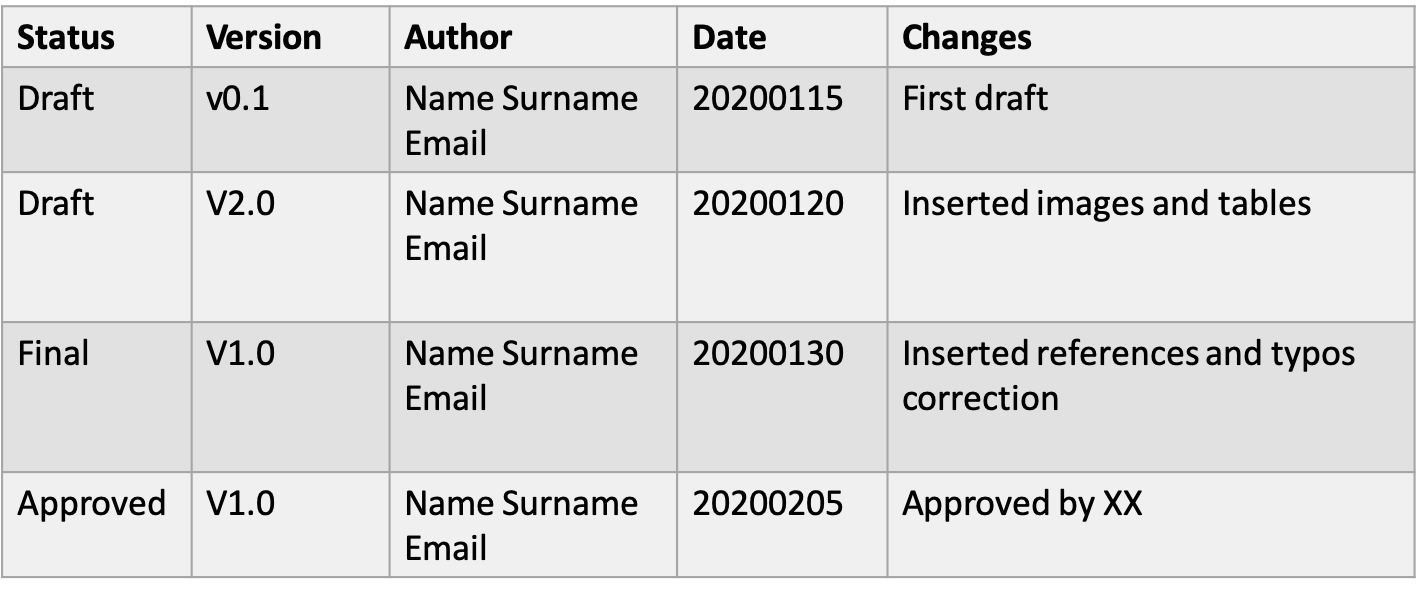Version control
Version control is a method to keep track of the changes made in a document over time, and to quickly find the latest version of a document or trace which version was “in force” at any one time. It also allows the deletion of drafts or redundant versions with confidence, reducing duplication and misunderstanding. Keeping different versions of a document decreases the risk of corruption, errors and data loss.
A version control system should be agreed to and adopted by the entire group at the beginning of the project. Decide what is the best version control system for your project, then document it so other users of your data (collaborators, coworkers etc) can understand it quickly.
Version control methods
There are several ways in which version control can be applied to your documents and the choice depends on the importance of the document, the number of collaborators, number of editing iterations and need of a formal record.
Version numbering by filename suffix
A simple method consists of numbering each version, regardless of the changes, by adding a suffix in the filename of the document. The suffix should consists of ordinal numbers (v1.0, v2.0, v3.0) for major revisions and decimals for minor changes (v1.1, v1.2, v2.1, v2.2). In addition to the version number, the suffix could contains the date, the status of the document and/or reviewer initials.
- filename_v1.3.txt
- filename_20200806_jd_v2.1.txt
- filename_draft_v0.3.txt
- filename_final_v1.2.txt
- filename_approved_v2.0.txt
Version control table
A version control table provides useful information about each change, the author, date and status of the document, and it should be inserted on the first page of the document. The information on the version control table should always match the information in the filename suffix.

Figure 1. Version control table.
Software
Version control can be embedded within the software you are using. Word, for example, keeps a history of modifications in each file. If you are storing your data on cloud services such as Dropbox or Google Drive they also provide you with version histories and backups over a few weeks or months.
Tools
Sources and further reading
Sources
- Version Management. The Graduate Institute Geneva https://libguides.graduateinstitute.ch/rdm/versioning.